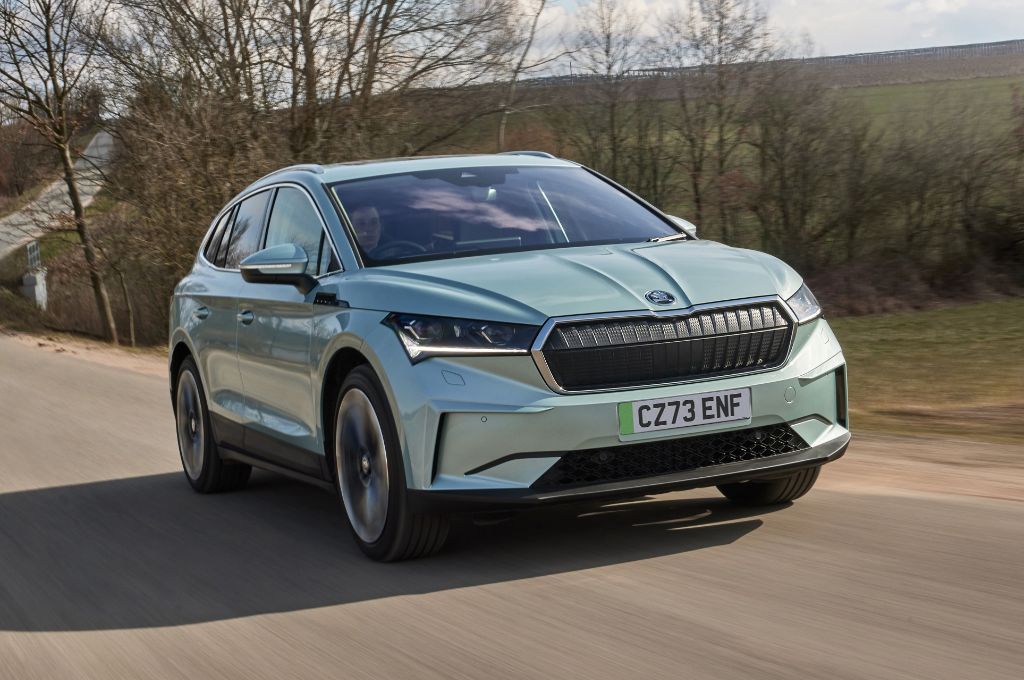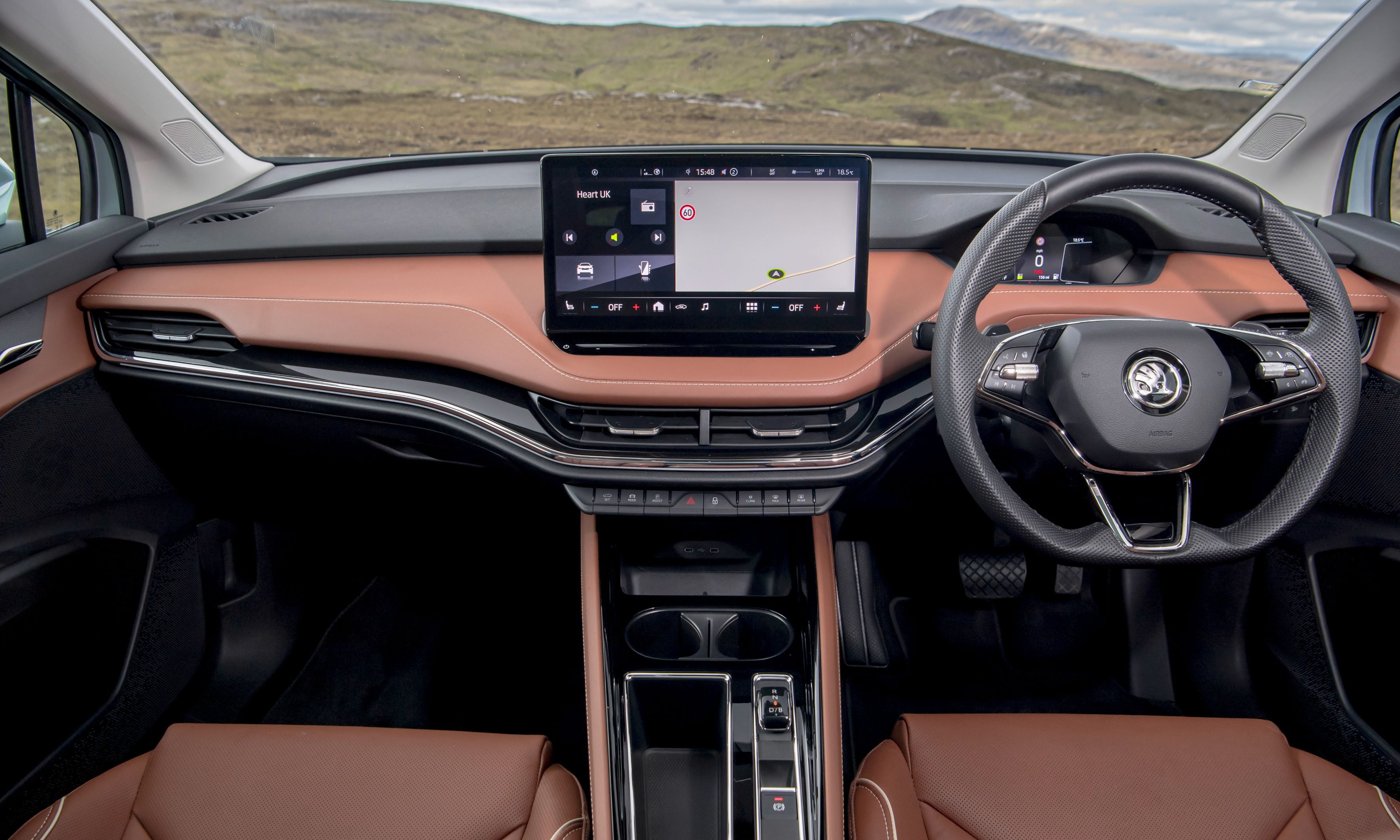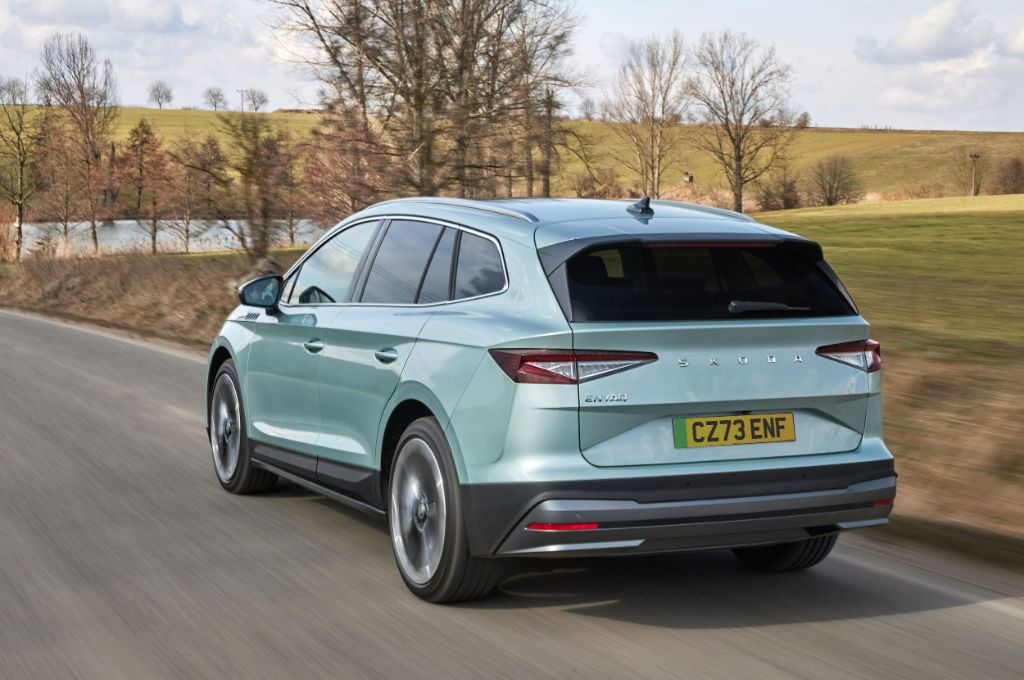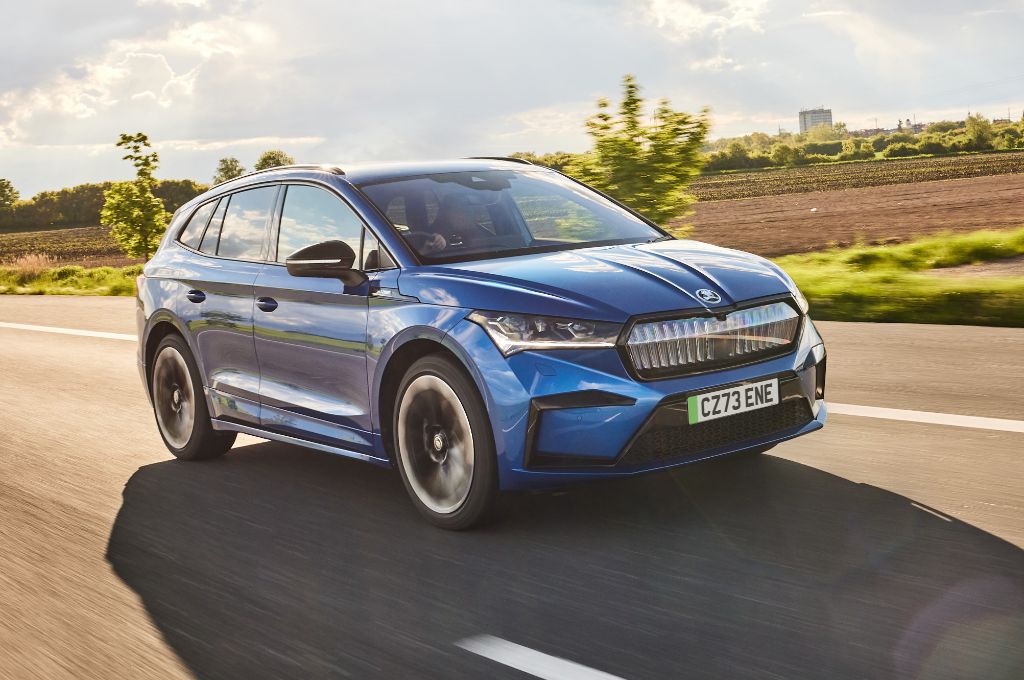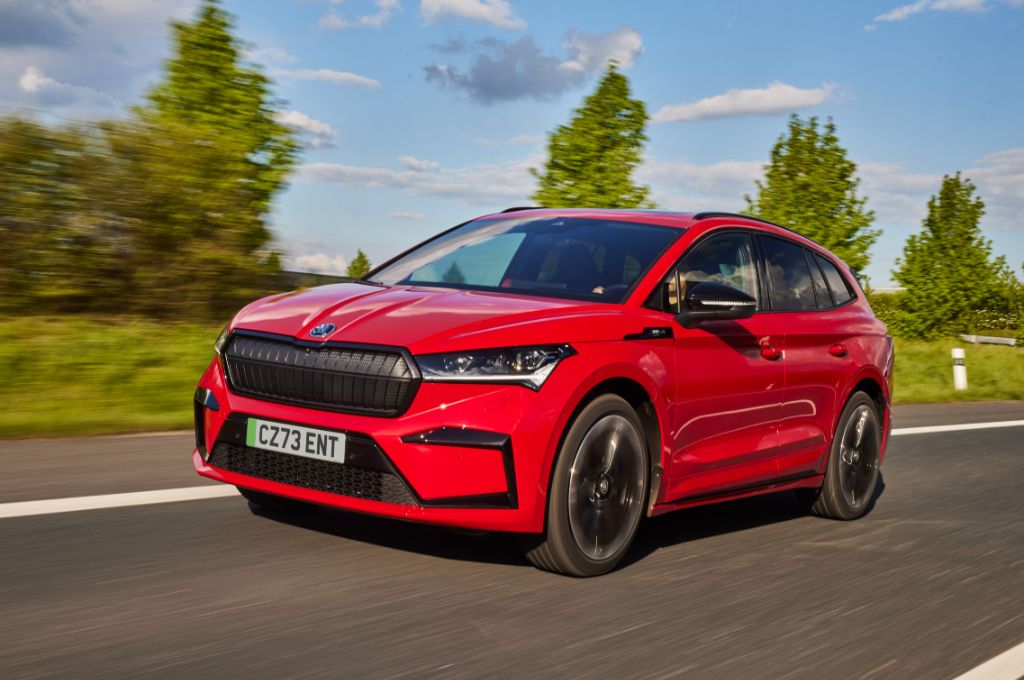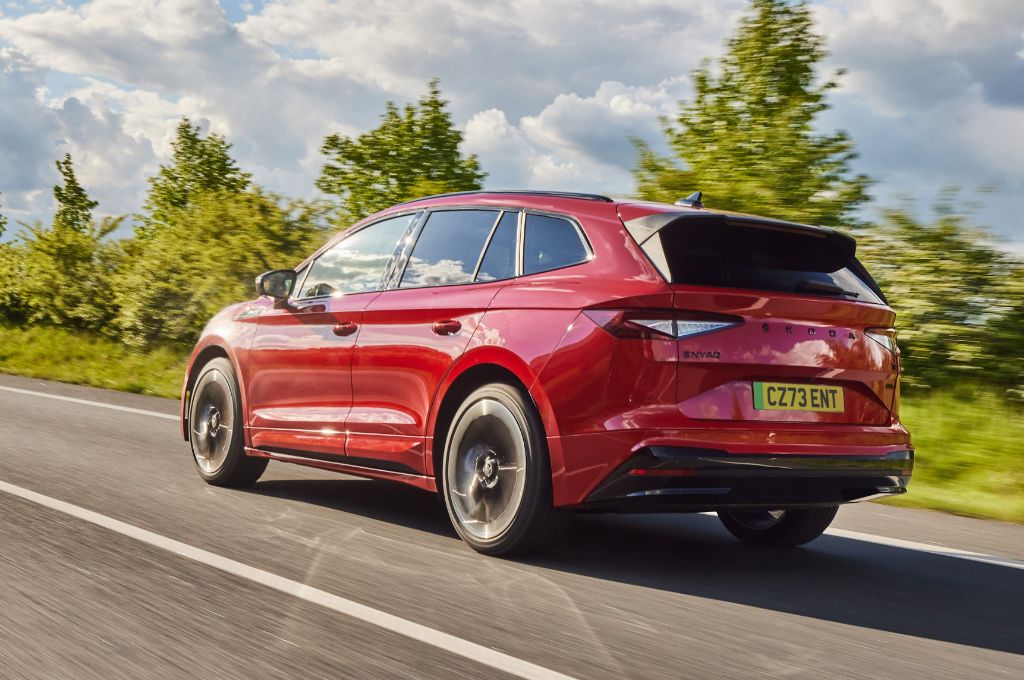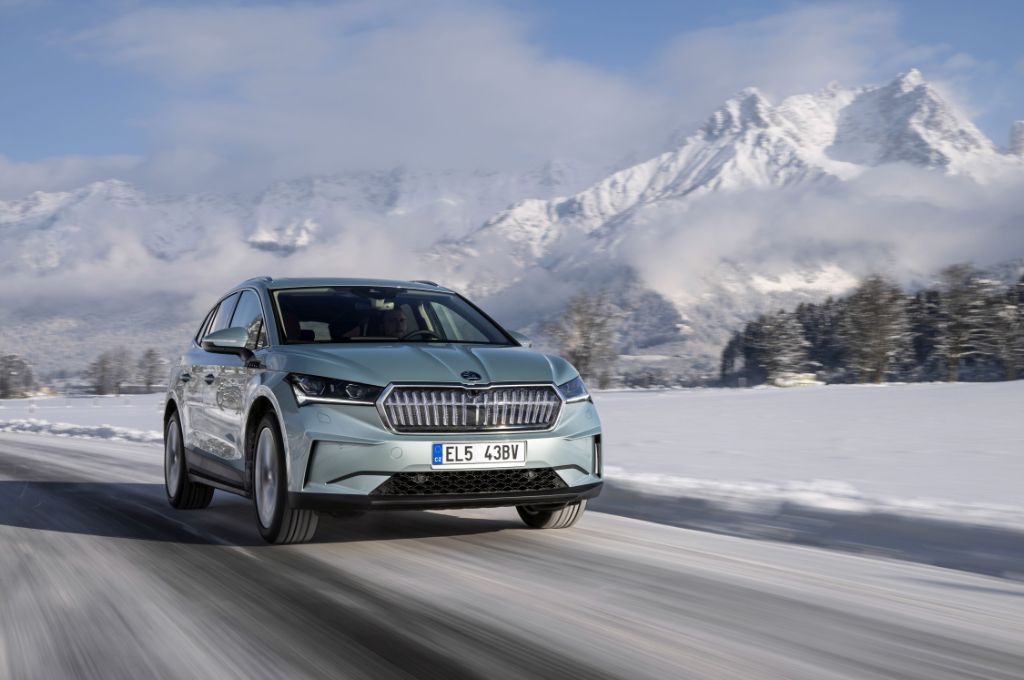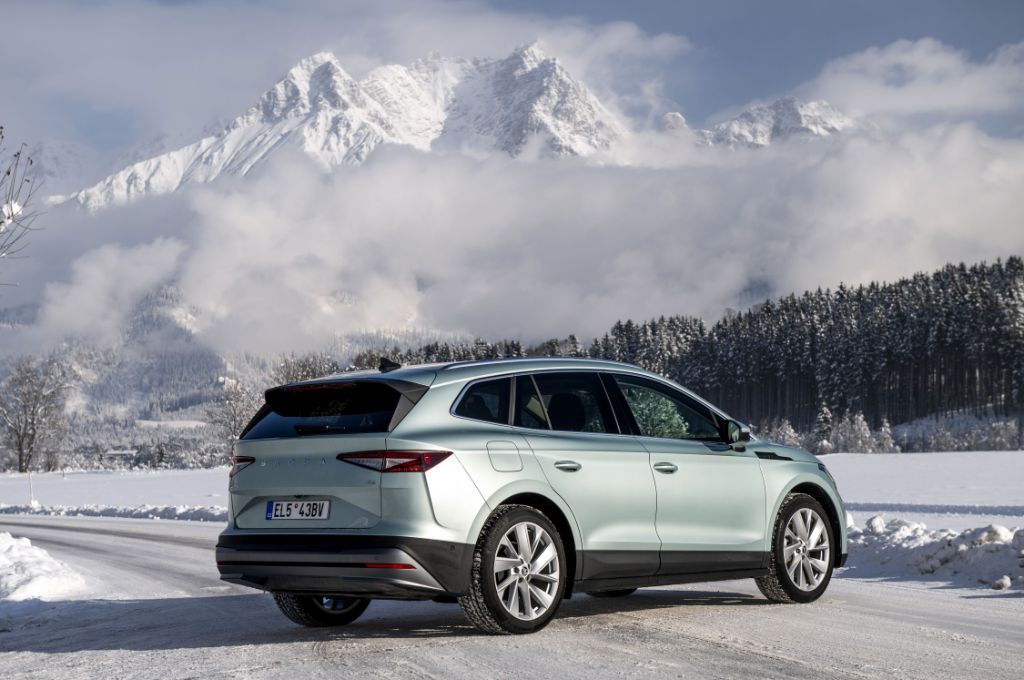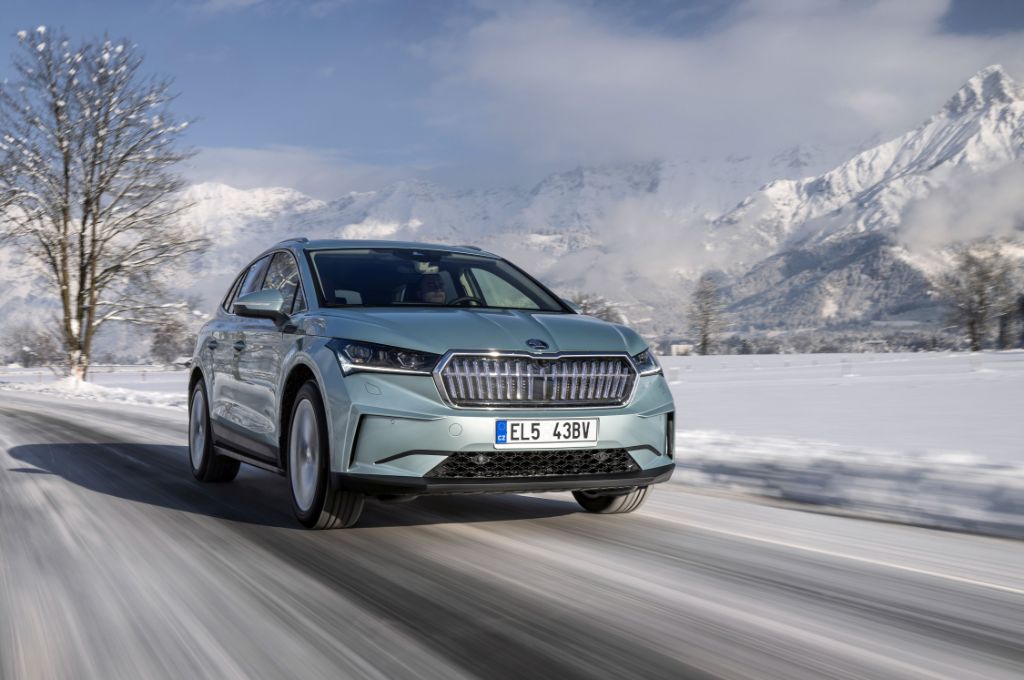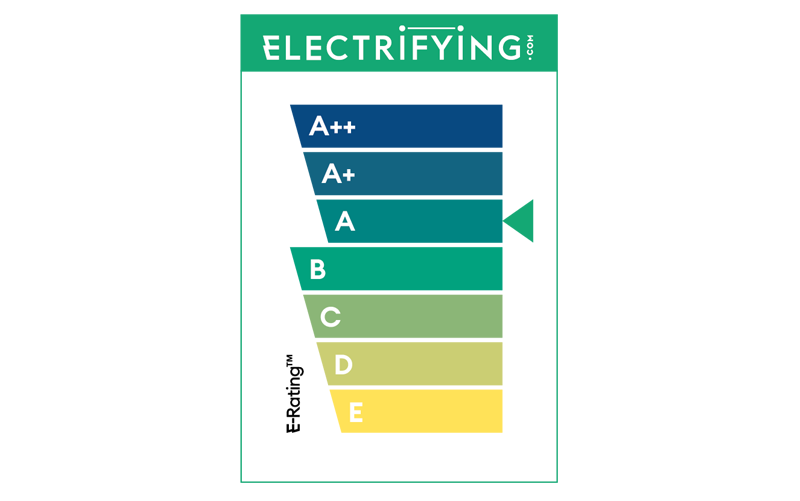Pricing
The old entry level 60 model has been replaced with a new smaller battery which has helpfully reduced the entry price by £2,000. This means the range starts at under £37,000 for the cheapest version. That’s still a big chunk of money for a 52kWh car, and there’s quite a significant leap in price if you want the larger 77kWh model which starts from £44,540. However, that difference is less obvious when you look at PCP prices. With the 77kWh model proving to be a more attractive purchase on the used market, it enjoys stronger residual values. As a PCP is effectively a repayment of the car’s depreciation over the contract period, the difference between the two models is less marked.
By dispensing with traditional trim grades (it’s goodbye SE and SE L etc), Skoda steers customers down the route of adding option packs to build their perfect car. It’s a system Porsche has used for years and while you can tailor your car like never before, the packs are expensive and often force you to have some kit that you may not need.
Although there are a few single options such as a panoramic roof and tow bar, the vast majority of gadgets are bundled together. As a result, you can end up with an option bill that runs into five figures. We also worry what this might mean for resale values. While second-hand buyers will happily pay more for an SE over an S, they might just get confused by the myriad of options on the Enyaq and you could struggle to get your money back when you sell.
Running costs
With the 77kWh model will you'll be paying around £25 for a full charge at home on standard rate power. If you can make use of cheap-rate electricity, the cost of charging the 77kWh car falls to under £8, although you may need a few nights to achieve a full charge if you only have a four-hour window for cheap-rate power.
As with all electric cars, if you use public chargers, you’ll be paying a whole lot more. An empty to full charge on a 175kW charger will be in the region of £60.













